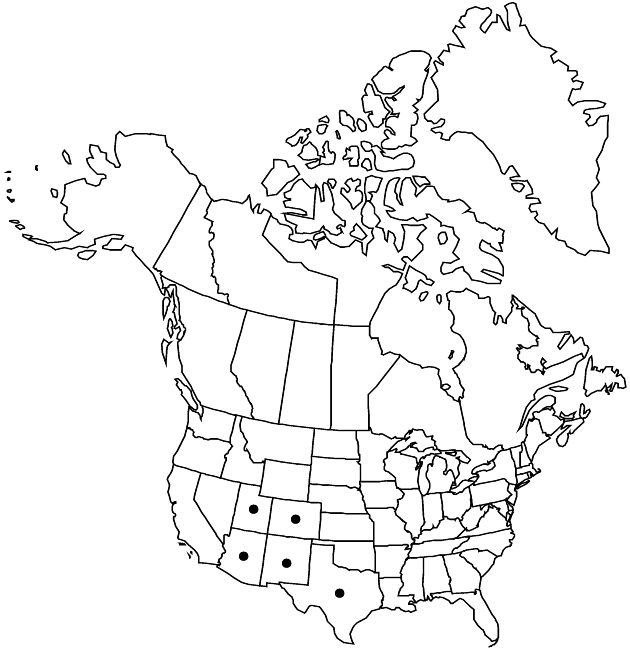Cirsium wheeleri
Bot. Tidsskr. 31: 67. 1911.
Perennials, slender, 15–60 cm; taprooted with deep-seated root sprouts. Stems 1–few, erect, closely gray-tomentose; branches 0–few, ascending. Leaves: blades lanceolate to narrowly elliptic, 10–25 × 1–4 cm, unlobed and merely spinulose or pinnately lobed about halfway to midveins, often terminal lobes long-tapered, lobes short, lanceolate to triangular, entire to few toothed or lobed, well separated by wide, U-shaped sinuses, main spines slender, 2–5 mm, abaxial faces gray-tomentose, adaxial green, glabrous to thinly tomentose; basal usually present at flowering, winged-petiolate; principal cauline winged-petiolate proximally, mid and distal sessile, progressively reduced distally, bases not or scarcely decurrent, sometimes distal weakly clasping; distalmost often reduced to lanceolate or linear, long-acuminate bracts. Heads 1–6, borne singly or few at branch tips in corymbiform arrays. Peduncles 0–10 cm. Involucres hemispheric to subcylindric, 1.5–2.2 × 1.5–2.5 cm, thinly floccose-tomentose or glabrate. Phyllaries in 6–9 series, imbricate, pale green with darker apices, brownish when dry, lanceolate (outer) to linear-lanceolate (inner), margins of outer entire, abaxial faces with narrow glutinous ridge; outer and middle appressed proximally, apices spreading to ascending, bodies entire or rarely spinulose, spines slender, 3–7 mm; apices of inner often dark purple or blackish, flexuous, scarious, entire to pectinate-fringed, tapered or expanded. Corollas white or pink to pale purple, 20–28 mm, tubes 9–14 mm, throats 5–7.5 mm, lobes 5–10 mm; style tips 2.5–6 mm. Cypselae stramineous with brownish streaks, 6.5–7 mm, apical collars colored like body, narrow; pappi 15–20 mm. 2n = 28.
Phenology: Flowering summer–fall (Jul–Oct).
Habitat: Coniferous forests, pine-oak, juniper-dominated woodlands, meadows
Elevation: 1200–2900 m
Distribution

Ariz., Colo., N.Mex., Tex., Utah, Mexico (Chihuahua, Sonora).
Discussion
Cirsium wheeleri occurs from the mountains of the Colorado Plateau of central Utah and southwestern Colorado south through the highlands of Arizona and New Mexico to southwestern Texas and northwestern Mexico. The recently described C. wheeleri var. salinense is a minor variant with subentire leaves that is scattered through much of the range of the species.
Selected References
None.